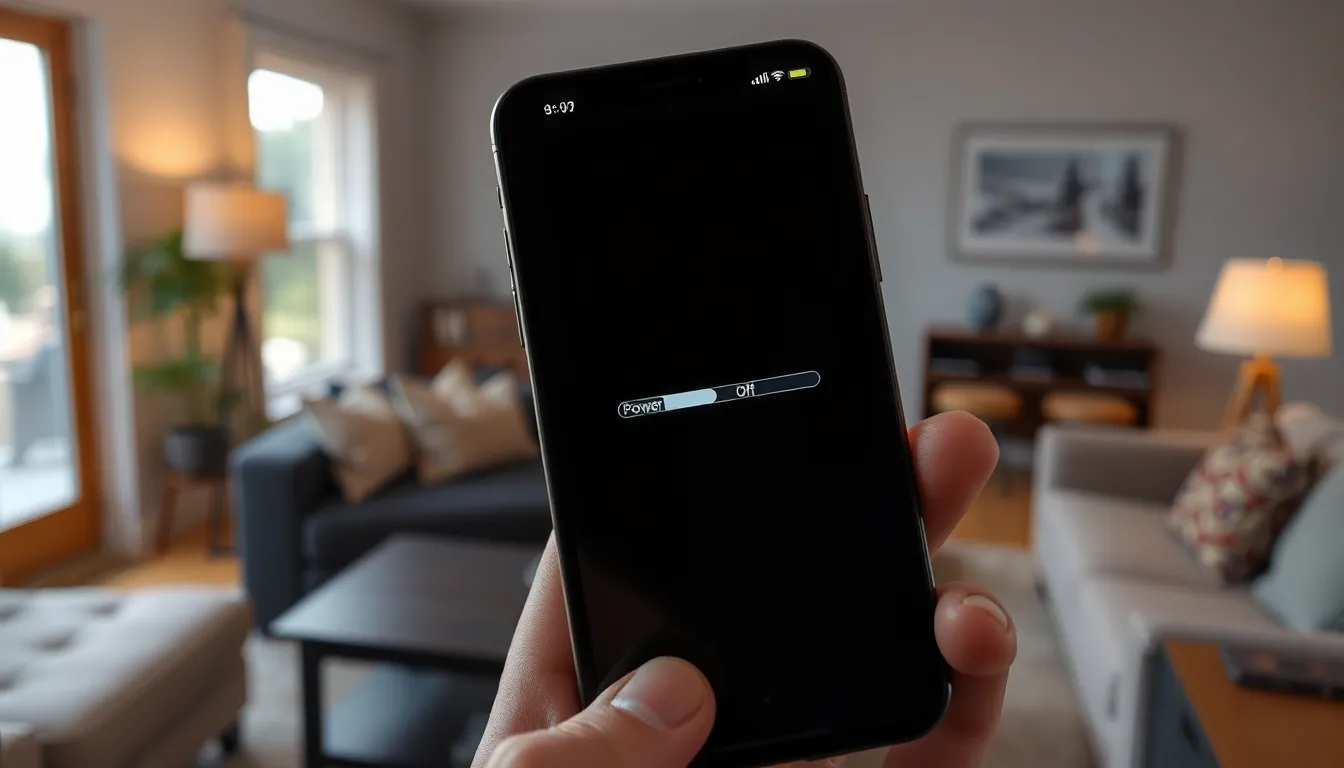Is your iPhone playing hide and seek with its power button? One moment it’s alive and kicking, the next it’s taking an unexpected nap. This bizarre behavior can be more than just a tech tantrum; it’s a sign that something’s amiss.
Imagine trying to send a text or catch up on your favorite show, only to find your phone has decided to switch off for a little “me time.” Frustrating, right? Understanding why this happens can save you from unnecessary headaches and keep your device in tip-top shape. Let’s dive into the common culprits behind this quirky issue and get your iPhone back on track.
Table of Contents
ToggleCommon Reasons Your iPhone Keeps Turning Off and On
Several factors can cause an iPhone to unexpectedly restart. Understanding these reasons helps pinpoint the underlying problem.
Battery Issues
Battery problems often lead to unexpected shutdowns. A degraded battery may not hold a charge effectively, causing the device to turn off even when there’s remaining power. Faulty connections between the battery and the phone’s components can also disrupt the power supply. Checking the battery health in Settings provides insight into its status. If the maximum capacity falls below 80%, consider replacing the battery.
Software Glitches
Software glitches frequently disrupt normal operation. An update that didn’t install correctly or outdated software can result in instability. Applications malfunctioning or running incompatible software may also trigger unexpected restarts. To resolve such issues, performing a software update is essential. Restarting the iPhone and resetting settings can help eliminate minor glitches. If problems persist, restoring the device to factory settings may be necessary.
Troubleshooting Steps to Fix the Issue

Follow these troubleshooting steps to address the issue of your iPhone turning off and on by itself.
Restart Your iPhone
Restarting the iPhone can resolve minor glitches. Users should press and hold the side button and either volume button until the power off slider appears. After swiping to turn off, wait for 30 seconds before turning the device back on. This simple step often fixes temporary software issues that may lead to unexpected restarts. If the problem persists, consider additional troubleshooting methods.
Update iOS
Updating iOS can eliminate software bugs causing the device to malfunction. To check for updates, navigate to Settings, select General, and tap on Software Update. If an update is available, download and install it to improve device stability. Regular updates often provide fixes for known issues that can lead to unexpected shutdowns. Staying up to date ensures optimal performance and access to the latest features.
When to Seek Professional Help
Unexpected iPhone shutdowns can signal serious underlying issues. Users noticing persistent restarts despite troubleshooting steps should consult a professional. Indicators like excessive overheating or unexplained battery drain often require expert attention.
When an iPhone experiences hardware malfunctions, seeking help becomes crucial. Faulty batteries are common causes, especially in older models. If the battery health displays a maximum capacity below 80%, a replacement may be necessary.
Professionals can also address software complications that regular updates do not resolve. Unexpected errors or prolonged performance issues highlight the need for specialized assistance. Users encountering error messages during updates should contact support.
Physical damage, such as exposure to liquids or drops, might also cause these shutdowns. Professionals can assess hardware integrity and recommend effective repairs. Users should document any irregular behavior prior to seeking help to provide comprehensive information.
If troubleshooting fails to yield results, it’s best to consider visiting an Apple Store or authorized service provider. Assistance from certified technicians ensures accurate diagnosis and repair options. Furthermore, users can access warranties or service plans to potentially reduce repair costs.
Understanding the appropriate time to seek assistance can prevent further frustration. Professionals possess the expertise necessary to resolve issues beyond user capability. Expedited repairs can restore functionality, ensuring a reliable device.
Preventive Measures for the Future
Regular maintenance enhances an iPhone’s longevity and performance, reducing the likelihood of unexpected shutdowns. Users should routinely check battery health in the Settings app. A battery with a maximum capacity below 80% typically requires replacement.
Utilizing the latest iOS updates can improve device functionality. Keeping the software current helps the iPhone run smoothly and eliminates potential bugs. Users can easily check for updates under General in the Settings app.
Avoiding extreme temperatures also contributes to device reliability. Operating an iPhone outside the recommended temperature range of 32°F to 95°F may cause performance issues, including unanticipated shutdowns. Storing the device within this range is advisable.
Effective app management further supports optimal performance. Users should regularly delete unused apps and clear app data to free up storage. Overloaded storage can lead to software glitches that cause random restarts.
Backup strategies are important as well. Utilizing iCloud or iTunes for regular backups ensures that data is secure. In the event of a malfunction, restoring from a backup is quicker and minimizes data loss.
Monitoring third-party apps can be crucial too. Some apps may negatively affect the device’s performance. If an app frequently causes issues, uninstalling it can resolve conflicts.
Finally, seeking professional service when necessary prevents further complications. Recourse to certified technicians can address underlying hardware or software problems. Prioritizing maintenance is key to ensuring a reliable iPhone experience.
Dealing with an iPhone that keeps turning off and on can be incredibly frustrating. Understanding the potential causes is essential for maintaining the device’s performance. Whether it’s a battery issue or a software glitch addressing these problems promptly can prevent further complications.
By following the recommended troubleshooting steps and seeking professional help when necessary users can restore their iPhones to optimal functioning. Regular maintenance practices like checking battery health and keeping software updated can significantly enhance the longevity of the device. With the right approach users can enjoy a reliable and efficient iPhone experience.








